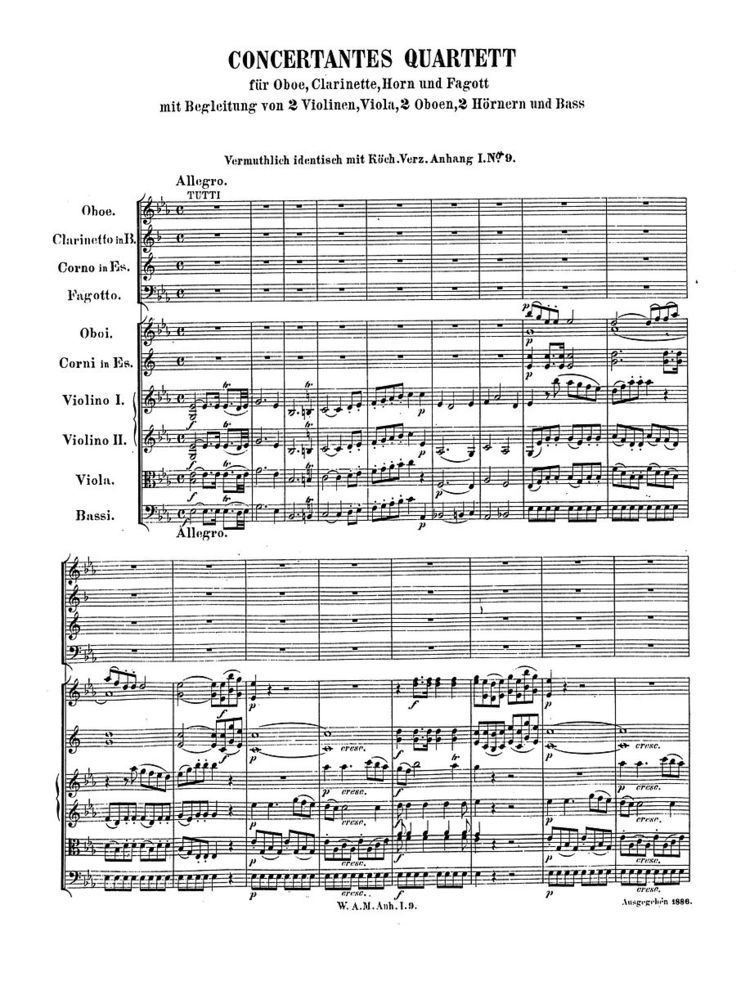 | ||
The Sinfonia Concertante for Four Winds in E flat major is a work thought to be by Wolfgang Amadeus Mozart, for oboe, clarinet, horn, bassoon, and orchestra, K. 297b (Anh. C 14.01). He originally wrote a work for flute, oboe, horn, bassoon, and orchestra, K. Anh. 9 (297B), in Paris in April 1778. There is considerable dispute about the relation of the work as it is performed today to this original work.
Contents
Instrumentation
The Sinfonia Concertante is scored for solo oboe, solo clarinet, solo horn, solo bassoon, and an orchestra of two horns, two oboes, and strings. A typical performance lasts about 28 minutes.
Movements
- Allegro, in common time. This movement is in sonata form with three expositions rather than two – one played by the orchestra, the other two by the soloists. It contains a written cadenza before the coda.
- Adagio in common time, with "gentle exchanges of thematic material".
- Andante con variazioni, a theme with ten variations and a coda. Each variation is separated by "identical, basically decorative orchestral ritornelli". This movement is in 2/4 time until the end of the last variation, where 6 adagio bars in common time lead to a coda in 6/8 time.
Authenticity
Mozart is known through letters and concert announcements to have written a sinfonia concertante for flute, oboe, horn, and bassoon, the original score of which is lost. There is considerable debate about the authenticity of what is performed today, and whether the extant piece is even related to the original work. Various scholars have conflicting opinions, and some say the composition is currently in a corrupt form. Stanley Sadie, for instance, is dismissive. Alfred Einstein considered it genuine. Some have the opinion that it is inconceivable that Mozart wrote a homotonal concerto (i.e. with all three movements in the same key; here E-flat major). The Mozart Project considers this piece as "spurious or doubtful", and it does not appear on the project's listing of concertos.
Mozart displayed affection and prominence for the wind instruments in his operas and concertos. Noteworthy wind passages are in the fifteenth and seventeenth piano concertos, with memorable dialogues with the soloist; flute, oboe and bassoon. In opera there are many arias with similar woodwind and French Horn passages, such as Fiordiligi's "Per pietà, ben mio, perdona" from Così fan tutte. Some authorities believe that these outstanding qualities are also displayed in this piece.
The Sinfonia Concertante is popular today, and regularly performed. It is well regarded by professional musicians. Robert Levin, who wrote an entire book about the piece, considers the orchestral part and the first movement cadenza to be spurious, and the soloists' role to have been modified by others from the original without having had the orchestral parts as reference. Levin has made a reconstruction of the original piece based on his research. The writing for wind instruments here is of such quality that it is only surpassed by the later "Gran Partita" in B-flat major, K. 361.
